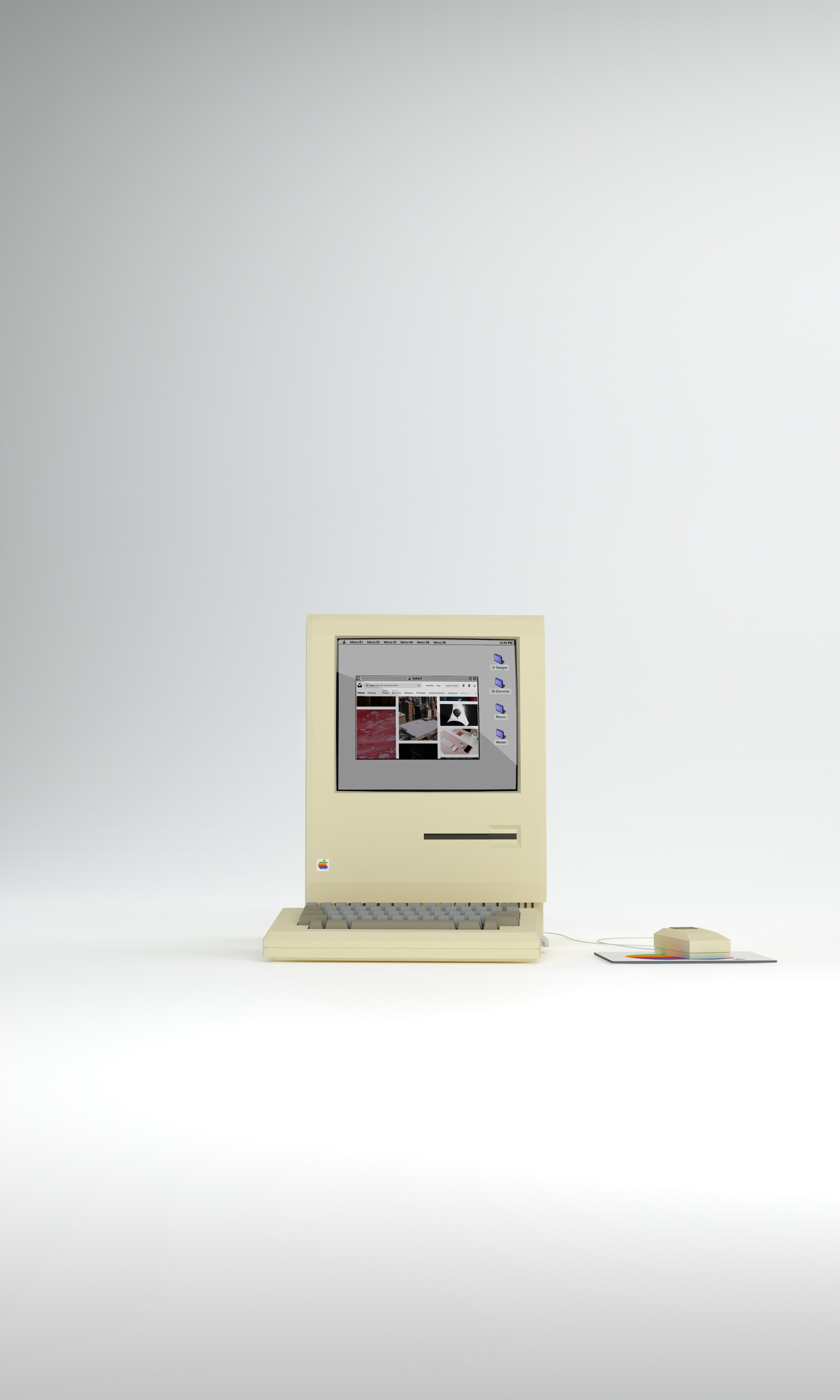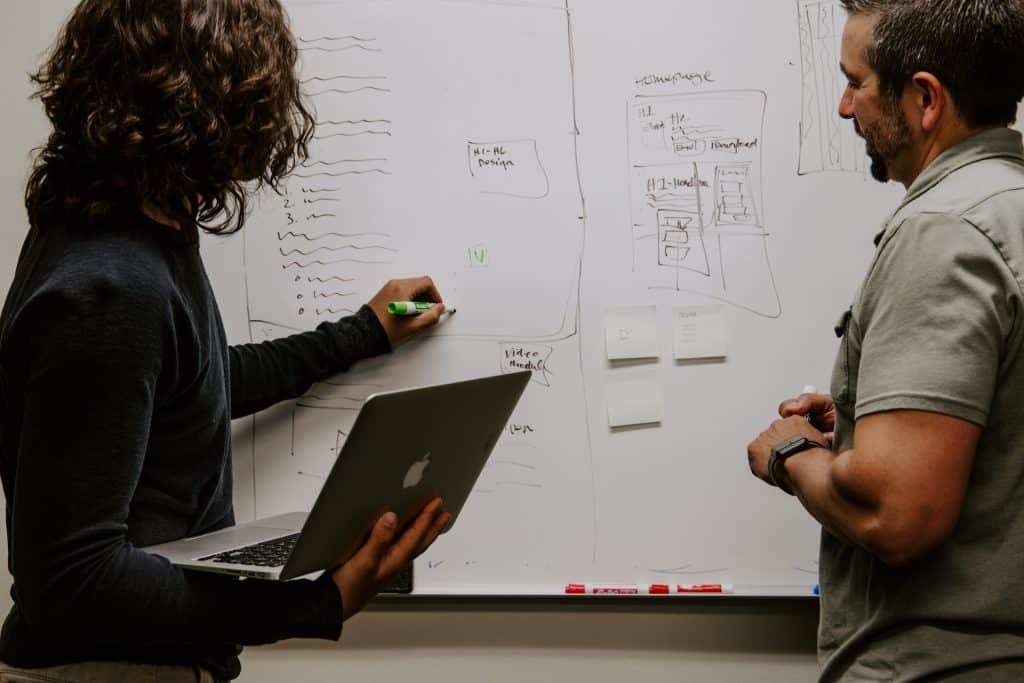Legacy System Assessment for Successful Legacy Application Modernization
After reading this article, not only will you get acquainted with the fundamentals of legacy application modernization assessment, but also gain insights on how to implement the practical suggestions to take full advantage of your system review.
Initial steps matter the most, so if you’re contemplating digital transformation and legacy system modernization, understanding the meaning and their essence related specifically to your organization is essential.

What is a Legacy System Assessment
Since there is no one way to approach app modernization because each organization’s culture and each application’s architecture are different, modernization readiness assessment is intended to diagnose the current conditions of the legacy apps and their legacy application modernization steps. When assessing its infrastructure’s functionality, a company aims to reach a revealing analysis of the target app along with its compute, storage and network environment. It provides a profound understanding of the current state of the infrastructure, as well as how it could support your legacy apps after modernization, and is to be further converted into modernization strategy and roadmap.
At the start, all current systems need to be examined so as to functional, business and financial criteria, apart from the technical one. Weighing up these factors within the assessment portfolio, a company can land decisions on which infrastructures are to be prospectively modernized, which digital transformation strategies are relevant to each app, which focus is to be kept within the preferred modernization approach, etc. With special attention devoted to an evaluation of the modernized-to-be infrastructures, a company develops and implements technical solutions for the system transformation according to the strategic planning outlined within the roadmap.
Expected Business Outcomes from Legacy System Assessment
App modernization readiness assessment may seem complicated and resource-consuming, but it is well worth undertaking if you consider what organizations gain after assessment completion. Here are listed some of the benefits an organization is likely to achieve after conducting app modernization readiness assessment:
- a report: to thoroughly detail the state of existing applications;
- a strategy: to back up each move of the upcoming apps’ modernization;
- a roadmap: to define modernizing from the business perspective, i.e. benefits and risks assessment;
- a blueprint: to describe the architecture of the given app after modernization from the technical side;
- an action plan: to bridge the gaps between the starting moment and the desired point, as well as prevent the probable troubles which can hinder the operation process.
Having conducted a modernization assessment, an organization may proceed to draft a roadmap for the digital transformation of the selected apps. It will encompass the necessary issues to be taken into consideration, such as:
- business benefits
- risk factors
- dependencies
- further recommendations.
Reasons to Conduct Legacy Application Modernization Assessment
Talking about modernization mainly makes sense in the context of legacy app. Being key to business functioning while operating on outdated technology, legacy application raises questions and doubts about its future, especially considering the costly maintenance which may not always seem sensible.
As implied previously, multiple decisions on modernization are made foremostly on functional and business grounds. The functional factors encompass the technical software points that are suitable for the app’s maintenance while the business factors embrace the management and commercial reasoning. Any company runs the risk of producing an off-target assessment if they do not conduct a rigorous, detailed, and many-sided analysis. Smooth and effective application modernization is pre-conditioned by a review of many criteria within technical, economic, and institutional points of view before making any decisions.
Given that digital transformation is a demanding process, many businesses question the commercial and other practicality of ever-pertinent modernization. If you are still wondering whether your app needs modernization, check out the most common benefits of modernizing legacy system that we have outlined below.
Obtain General Visibility on the System
This item on the list is absolutely necessary for an organization’s image of a reliable, efficient, secure, and up-to-date website or app. An all-inclusive understanding of the company’s devices, services and infrastructures stands for getting an advantage in ensuring security posture, high performance, cost-efficiency and upcoming improvements. The visibility encompasses:
- how many apps all in all an organization owns;
- what apps are mission-critical for the enterprise;
- how many customer-facing applications a company has;
- whether the pace of the development process is satisfactory.
Collect Stakeholders Needs
Various stakeholders and their groups may put different concerns on their agenda. However, when determining the future of certain legacy apps, the expectations of the stakeholders should be recognized and aligned. With the primary aim of either settling on or refusing from modernization, we strongly advise organizations to select the key stakeholders and put the finger on their drivers and needs.
Another aspect that benefits from interviewing stakeholders is a vision of which apps from the portfolio of a company’s assets are quite up-to-date, and which ones might require some modernization, as well as the rationale to back it up. As the time, financial and other resources are finite, the key stakeholders’ standpoints aid in prioritizing systems for assessment, and the resource distribution and allocation, according to the defined business objectives.
Technological aspirations reinforced by the most prominent business needs can set the direction and pace for modernization, and generate its strategy which will explain and support decisions and steps taken within the modernization practical roadmap.
Discover Legacy App State
The ongoing condition of legacy systems can be diagnosed through check-ups in these sectors: app performance, security, reliability and cost optimization opportunities which are covered in more detail below.
Performance
The cloud assessment conducted on a company’s systems provides insights into the following issues:
Is the app’s performance fast enough? As a valid metric, App Performance reveals the true condition of every integral part of the infrastructure. Taking into account that cloud applications are an exemption because of their smooth and swift operation, as a rule, legacy applications do not deliver the expected level of performance set by cloud environments.
To illustrate, the performance of websites which don’t fulfil page load speed demands can be a disappointing experience to those users who are already familiar with the faster and more effective performance of cloud-based solutions.
Even though every system is unique in its metric and requirements, for customer-facing web applications, having a competitive advantage of enhanced performance, especially in such tangible factors as operation speed, is always sensible.
There are some online tools that can help you test out your website performance, for instance:
Security
As one of the present-day central concerns among users and businesses alike, security poses certain challenges and requirements in order to keep up a company’s reputation and competitive standing. A modernization assessment sheds light on the following questions:
Does your infrastructure meet security and compliance requirements? More precisely, you will find out whether…
- there are any security risks that can be avoided;
- auditing and governance processes are set up correctly;
- workload/operation behavior is tracked and monitored;
- applications undergo regular testing and validation.
Cost Optimization Opportunities
Organizations put efforts into striking a balance between maximizing business value and minimizing operation-related expenses. The assessment also pays off by highlighting possible answers to these questions:
What are the cost optimization opportunities to be employed? What’s more, it goes hand in hand with discovering if a company can simplify…
- manual work performed by its employees;
- customer interactions to boost usability.
Reliability
As one of the paramount parameters determining an app’s viability, reliability serves as a usual target for improvement in a seemingly perfectly-operating system. Aiming at failure-free functioning to fulfil the users’ needs, you will benefit from assessment so as to…
Are the disaster recovery plans and backup procedures in order? Modernization assessment is intended to identify the effectively operating apps along with the non-effectively functioning ones so that the upgrading strategies can be drafted. Full awareness of the system’s functions can be achieved with the use of the most progressive proprietary tools. In addition, they are handy for risk prevention during and after modernization.
The easiest way for organizations to arrive at a better app performance, while at the same time minimizing the cost to upgrade and maintain their infrastructure, is by preserving core functional applicable code and removing the unnecessary code. One way to pinpoint the former and the latter is by conducting a thorough legacy system assessment; it will also help establish the guidelines suitable for overall environment optimization.
As mentioned before, there is no universal approach for app improvement or modernization, because they will be led by a set of your specific business drivers, objectives, and infrastructure’s current state. Only a comprehensive evaluation of your systems from both functional and business perspectives will enable you to develop an adequate and viable modernization strategy and an action plan.
Choose Modernization Strategy
Any business can take full advantage of the most advanced AWS Serverless technology by performing legacy application modernization to cloud environments as the cloud nowadays sets the trends of development in the technical domains. To do so, a suitable to the unique initial pre-modernization data, extracted via assessment, application modernization strategy is to be composed.
The proven best-working approaches of Cloud App Modernization Strategies include the following procedures:
- recoding your legacy application to become a more progressive serverless app with enhanced performance, strengthened security, and minimized cost;
- containerizing apps to make them as scalable and reliable as necessary;
- step-by-step redeveloping of monolithic systems into microservices with independent API and event-driven architecture for applications.
Create App Modernization Roadmap
This roadmap plays a critical role in the overall legacy system modernization effort. As data derived from application assessment underpins the modernization strategy, it supports decisions taken in designing a step-by-step plan for modernization implementation. An all-embracing application modernization roadmap is based on the following points:
- business objectives;
- stakeholders’ demands;
- IT assets (apps, infrastructures, data sources, environments);
- resources (data, financial assets, development capacity);
- technical expertise and practical experience;
- best established practices;
- current business operations;
- management timelines.
Be sure to go through this article to gain a comprehensive understanding of creating an AWS application modernization roadmap. And the illustrated Romexsoft app modernization value pyramid will be helpful in roadmap consideration.
How Romexsoft can Help
Bringing your software to a fundamentally new level of service quality necessarily entails the prior conducting of assessment. This is a key stage in your legacy application modernization. Profoundly carried out research provides executives with all types of hands-on information, including strengths and weaknesses, risks and improvement possibilities that ultimately are put into quite specific and applicable recommendations.
Romexsoft experts are engaged in two major areas of application assessment:
- Environment assessment, which focuses on soft- as well as hardware regarding the system’s performance, interoperability, operational expenditure, reliability and failure rate among others.
- Application/software assessment proper, which analyses quantitative data so as to user interfaces, change requests or information volumes, and is tied up to the scaffolding elements of apps, such as programming language, test data or CM.
AWS-based systems can benefit from the following offers:
AWS Infrastructure Assessment
We at Romexsoft, as an Advanced APN Partner, operate in line with AWS Well-Architected Framework, and so conduct the assessments according to the patterns and practices designed by Amazon. Directly contacting AWS Solutions Architects, we ensure Amazon-validated assessment.
Service artefacts:
An assessment document, conducted on the basis of the Pillars of AWS Well-Architected Framework. The document encompasses an outline as well as details on infrastructure assessment, complemented by a record of suggested enhancement action items.
AWS infrastructure assessment services comprise:
AWS Account Configuration Assessment
A thorough overview of AWS account resources configuration reveals the former and the present-day AWS resources associations and configurations to track down their evolution.
Operational Excellence Assessment
A review centers around the ability of Romexsoft and its customers to manage and supervise AWS systems for the purpose of enhancing operational processes to deliver business value.
Operational Excellence Assessment encompasses:
- definition of metrics that will evaluate the workload’s health;
- collection and analysis of workload health metrics;
- operational enablement of the personnel to maintain the solution in running, monitoring, recovering and upgrading it;
- deployment testing and validation;
- version-controlled code assets (application code, deployment scripts, or infrastructure templates);
- application and workload telemetry.
Security Assessment
Security assessment covers:
- Identity and Access Management (IAM)
Assessment of IAM is based on the established best practices of AWS and other identity and access management systems acquired by Romexsoft. - Networking
The review requirements include the security best practices for Virtual Private Cloud (Amazon VPC) as well as other network security considerations. - IT Operations
Conditions at the core of this category are derived from IT security operations best practices, namely monitoring, incident response, and data classification.
Reliability Assessment
The criterion, which is rooted in meeting business and customer demand, focuses on the ability of a workload or a system to prevent threats and recover from failures with as little damage as possible. It relates to:
- deployment automation;
- definition of the solution’s recovery requirements, like recovery time objective (RTO) and recovery point objective (RPO);
- solutions’ adaptation to fluctuating demand that can be automated through different AWS services (e.g. Amazon S3, AWS Auto Scaling, etc.) if architecture or licensing limitations permit.
Cost Optimization Assessment
A review of Cost Optimization is grounded in the needs of Romexsoft customers to deliver value in the most cost-efficient way. We perform a total cost of ownership, as well as other cost modelling analyses to render the most comprehensive insights on the running cost for the AWS-based solutions in the customer’s environment.
For non-AWS-based environments, Romexsoft offers and provides:
Migration Readiness Assessment
As a step towards ensuring your business’s continuity and viability among the changing variables of technological and market conditions, AWS migration is associated with more than prospectively increased revenue.
Research carried out for our blog article about application migration to AWS indicates that migrating legacy infrastructures to the cloud is directly linked to the system’s agility, security, resilience and resource distribution, which encourages further technological growth.
For this reason, Romexsoft aids legacy systems in conducting thorough evaluations of their environments to first decide on whether or not migration is a valid option for the given conditions, and then, map out the optimal way of commencing and completing it.
Frequently Asked Questions
Assessing legacy systems is vital because it provides a clear understanding of the current state of your applications. This includes their performance, security, reliability, and potential areas for cost optimization. For instance, you might discover that an application's performance is subpar due to outdated technology, or that there are security vulnerabilities that need to be addressed. This assessment also helps identify which parts of the system are mission-critical and which ones are outdated or redundant. These insights are crucial for planning the modernization, as they help you prioritize which applications to modernize first and determine the most effective modernization strategies.
An application modernization assessment provides several tangible outcomes. First, you'll receive a detailed report outlining the current state of your applications, including their strengths, weaknesses, and areas for improvement. Second, you'll have a strategy that guides each step of the modernization process, ensuring that all actions align with your business objectives. Third, you'll have a roadmap that outlines the modernization process from a business perspective, including the benefits, risks, and dependencies. Fourth, you'll have a blueprint that describes the technical architecture of the application after modernization. Lastly, you'll have an action plan that bridges the gap between the current state and the desired outcome, helping you avoid potential obstacles during the modernization.
Supporting legacy systems during the modernization involves a careful balance of maintaining current operations while implementing new technologies. This begins with a thorough assessment of your legacy systems to understand their current state, including performance, security, reliability, and cost optimization opportunities. From there, you can identify which components are critical to business operations and must be maintained throughout the modernization process. This information helps you develop a modernization strategy that ensures these critical components are modernized without disrupting business operations. This is especially useful during legacy system modernization, where gradual transition strategies are often necessary. For example, you might choose to modernize these components incrementally, or use a hybrid approach that allows the legacy system and the modernized system to operate in parallel.
Creating an application modernization roadmap involves several detailed steps. First, identify your business objectives and the demands of your stakeholders. This will help you align the modernization process with your business goals. Next, create an inventory of your IT assets, including applications, infrastructures, data sources, and environments. This will give you a clear picture of the resources you have at your disposal. Evaluate your resources, including data, financial assets, and development capacity. This will help you understand what you can leverage during the modernization. Consider your organization's technical expertise and practical experience, as well as best established practices. This will guide the technical aspects of the modernization process. Finally, consider your current business operations and management timelines. This will help you create a roadmap that is realistic and achievable, taking into account your organization's operational constraints. The final roadmap should provide a detailed, step-by-step plan for implementing the modernization strategy, ensuring that all these factors are taken into account.



